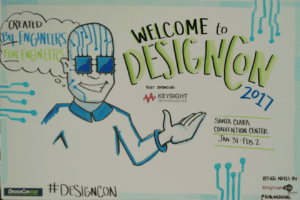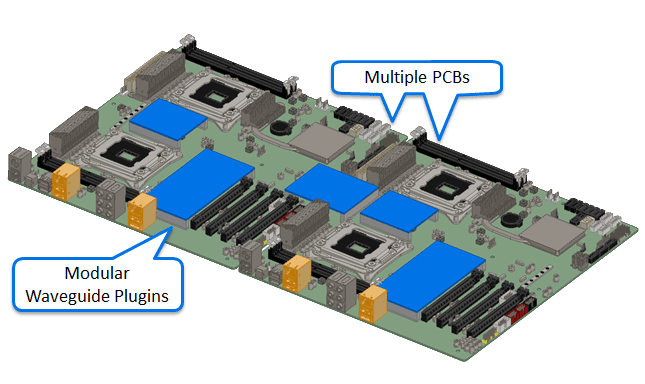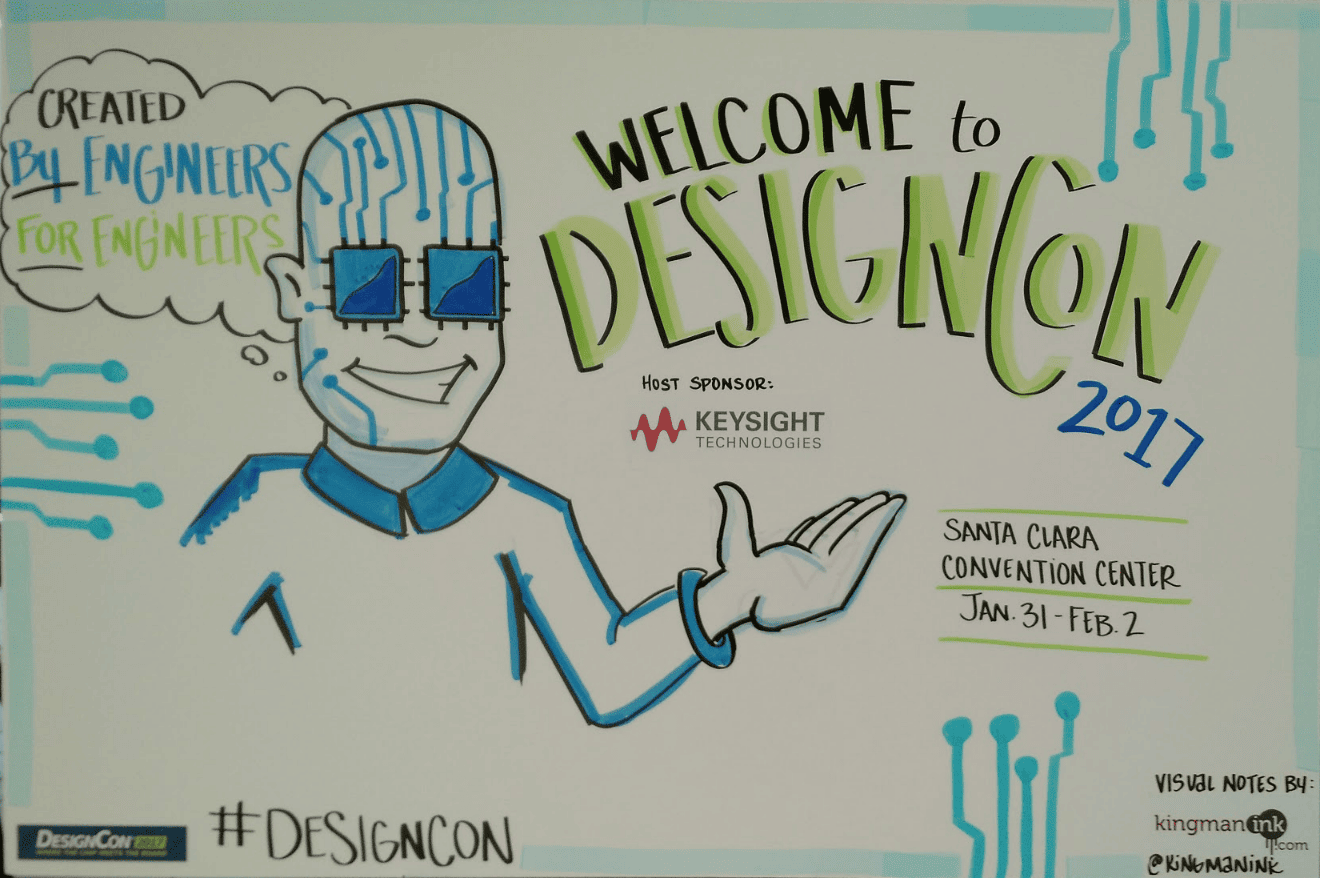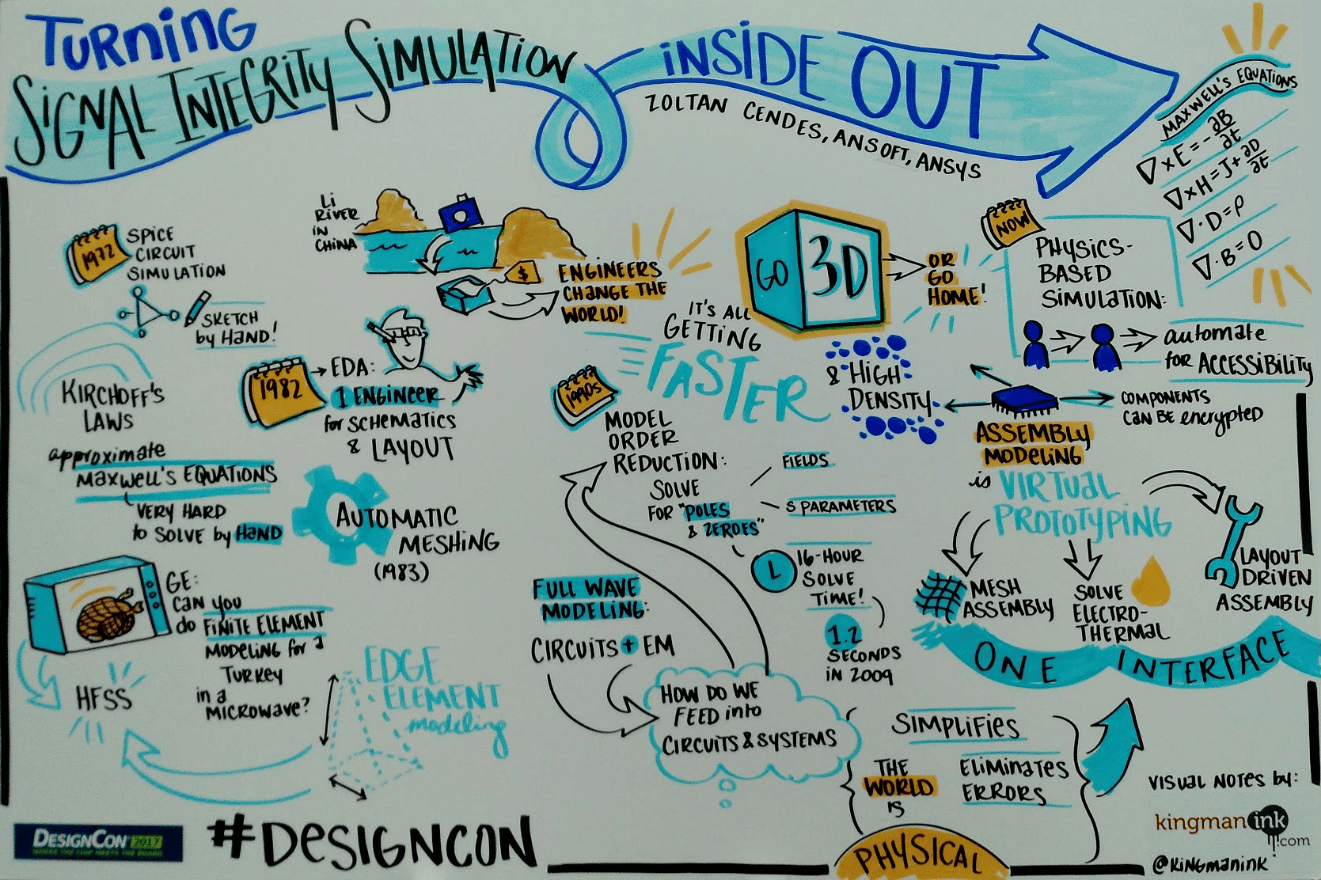
Considered the “largest gathering of chip, board, and systems designers in the country,” with over 5,000 attendees this year and over 150 technical presentations and workshops, DesignCon exhibits state-of-the-art trends in high-speed communications and semiconductor communities.
Here are the top 5 trends I noticed while attending DesignCon 2017:
1. Higher data rates and power efficiency.
This is of course a continuing trend and the most obvious. Still, I like to see this trend alive and well because I think this gets a bit trickier every year. Aiming towards 400 Gbps solutions, many vendors and papers were demonstrating 56 Gbps and 112 Gbps channels, with no less than 19 sessions with 56 Gbps or more in the title. While IC manufacturers continue to develop low-power chips, connector manufacturers are offering more vented housings as well as integrated sinks to address thermal challenges.
2. More conductor-based signaling.
PAM4 was everywhere on the exhibition floor and there were 11 sessions with PAM4 in the title. Shielded twinaxial cables were the predominant conductor-based technology such as Samtec’s Twinax Flyover and Molex’s BiPass.

A touted feature of twinax is the ability to route over components and free up PCB real estate (but there is still concern for enclosing the cabling). My DesignCon 2017 session, titled Replacing High-Speed Bottlenecks with PCB Superhighways, would also fall into this category. Instead of using twinax, I explored the idea of using rectangular waveguides (along with coax feeds), which you can read more about here. I also offered a modular concept that reflects similar routing and real estate advantages.

3. Less optical-based signaling.
Don’t get me wrong, optical-based signaling is still a strong solution for high-speed channels. Many of the twinax solutions are being designed to be compatible with fiber connections and, as Teledyne put it in their QPHY-56G-PAM4 option release at DesignCon, Optical Internetworking Forum (OIF) and IEEE are both rapidly standardizing PAM4-based interfaces. Still, the focus from the vendors was on lower cost conductor-based solutions. So, I think the question of when a full optical transition will be necessary still stands.
With that in mind, this trend is relative to what I saw only a couple years back. At DesignCon 2015, it looked as if the path forward was going to be fully embracing optical-based signaling. This year, I saw only one session on fiber and, as far as I could tell, none on photonic devices. That’s compared to DesignCon 2015 with at least 5 sessions on fiber and photonics, as well as a keynote session on silicon photonics from Intel Fellow Dr. Mario Paniccia.
4. More Physics-based Simulations.
As margins continue to shrink, the demand for accurate simulation grows. Dr. Zoltan Cendes, founder of Ansoft, shared the difficulties of electromagnetic simulation over the past 40+ years and how Ansoft (now ANSYS) has improved accuracy, simplified the simulation process, and significantly reduced simulation time. To my personal delight, he also had a rectangular waveguide in his presentation (and I think we were the only two). Dr. Cendes sees high-speed electrical design at a transition point, where engineers have been or will ultimately need to place physics-based simulations at the forefront of the design process, or as he put it, “turning signal integrity simulation inside out.” A closer look at Dr. Cendes’ keynote presentation can be found in DesignNews.
5. More Detailed IC Models.
This may or may not be a trend yet, but improving IC models (including improved data sheet details) was a popular topic among presenters and attendees alike; so if nothing else it was a trend of comradery. There were 12 sessions with IBIS-AMI in the title. In truth, I don’t typically attend these sessions, but since behavioral models (such as IBIS-AMI) impact everyone at DesignCon, this topic came up in several sessions that I did attend even though they weren’t focused on this topic. Perhaps with continued development of simulation solutions like ANSYS’ Chip-Package-System, Dr. Cende’s prediction will one day make a comprehensive physics-based design (to include IC models) a practical reality. Until then, I would like to share an interesting quote from George E. P. Box that was restated in one of the sessions: “Essentially all models are wrong, but some are useful.” I think this is good advice that I use for clarity in the moment and excitement for the future.
By the way, the visual notes shown above were created by Kelly Kingman from kingmanink.com on the spot during presentations. As an engineer, I was blown away by this. I have a tendency to obsess over details but she somehow captured all of the critical points on the fly with great graphics that clearly relay the message. Amazing!




















